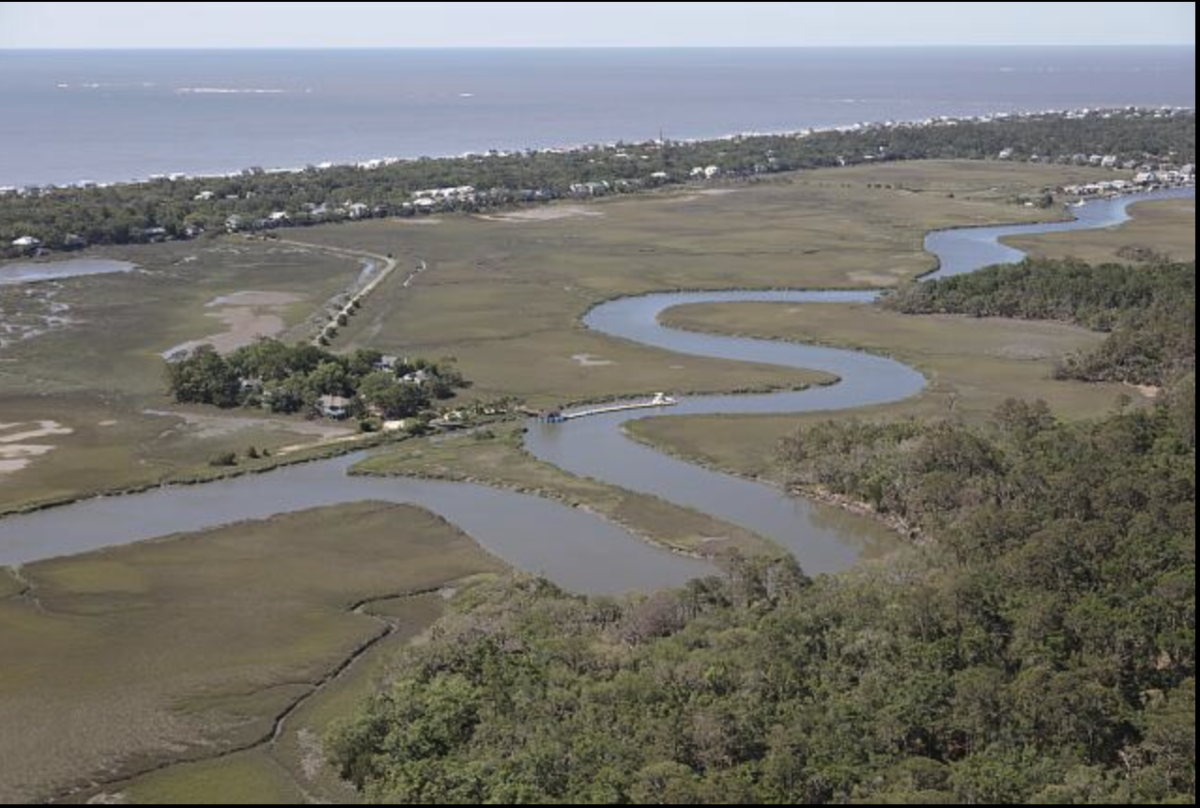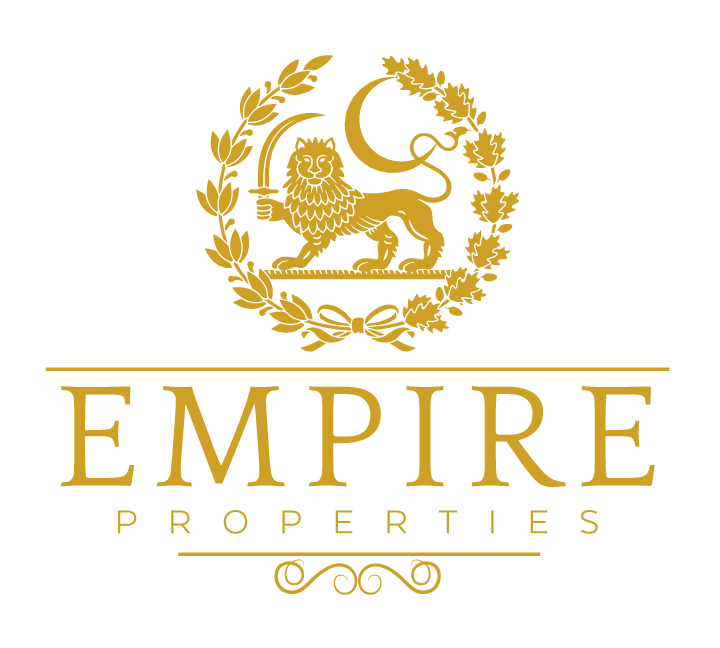Just an hour’s drive from downtown Charleston, Edisto Island is the perfect day trip that seems a world away from the city. Edisto is a beautiful sea island in the ACE Basin sandwiched between the North and South Edisto Rivers and boasting miles of beach and marshes. The drive to Edisto along Highway 1774 is as beautiful as the destination as you drive below Spanish moss-laced live oak trees past saltmarsh vistas and historic farms and plantations. History lovers will want to stop at Hutchinson House, Edisto Museum, and the historic churches on the island before heading to Edisto Beach State Park or Botany Bay, and then relaxing for drinks and dinner before trekking back to Charleston- or to one of the quaint B and Bs or hotels near the beach.

Edisto’s history is complex, as it was home to several plantations that grew rice and sea island cotton, cultivated by enslaved Gullah people whose descendants still live on the island. The easiest way to get to Edisto today is by car down US 17 before veering onto tree-lined 174, but before there were modern bridges to expedite the trip, most islanders took ferries to get to and from the mainland. Historian Nic Butler explains, “members of the younger generation are surprised when some ‘old timer’ tells them that the streams of lower South Carolina once echoed with the whistle of side wheelers, tugs and steam launches which plied between Charleston, Georgetown and Beaufort, carrying hundreds of passengers, and cargoes valued at thousands of dollars. There are many in Charleston who will remember the Planter, the Merchant, and the Pilot Boy. These steamers generally docked at Accommodation Wharf [in Charleston] and their arrival was greeted by throngs of people, including cabmen, draymen, Charlestonians expecting guests from the sea islands, and others who came out of mere curiosity.”
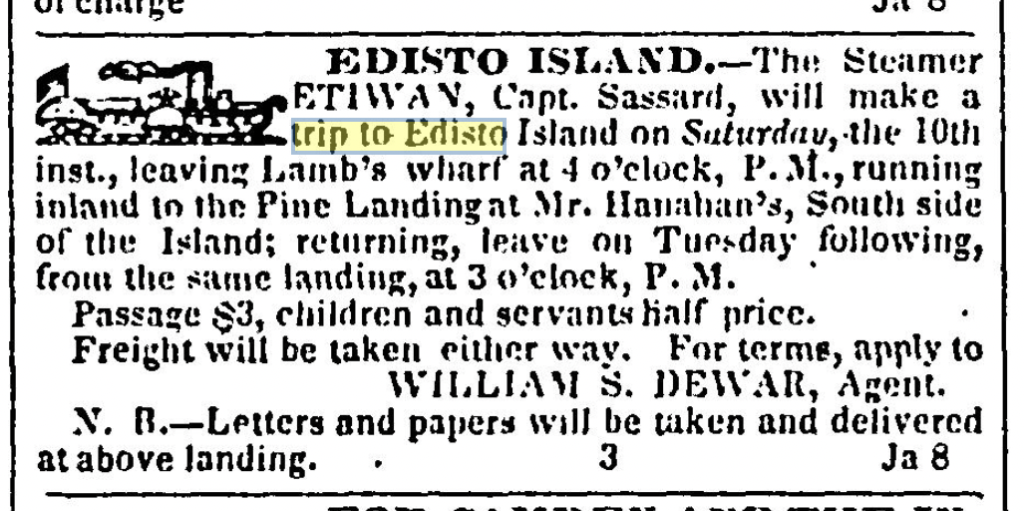
One of the most special things about Edisto is how it is still local, beautiful, and rural, which has taken the hard work of several land conservation groups and island natives who are dedicated to preserving this special place. Highway 174 is designated as a National Scenic Byway, winding for seventeen miles as a two-lane road through maritime forests and marshes toward the Intracoastal Waterway to the Atlantic Ocean. Stop at the base of McKinley Washington Jr. Bridge as you enter the island for beautiful vistas, a favorite fishing and crabbing spot (Dawhoo Landing), and a great place to spot seabirds.
King’s Farm Market roadside stand is a must stop for local produce, baked goods, and fresh caught seafood chilled and ready to go. They carry Carolina grown rice, Wadmalaw Island tea, barbecue sauce from neighboring Johns Island, fresh honey, and dressings, pickled vegetables, sauces, and seasonings made in-house, along with locally made crafts and art for a special souvenir to remember your Edisto trip.
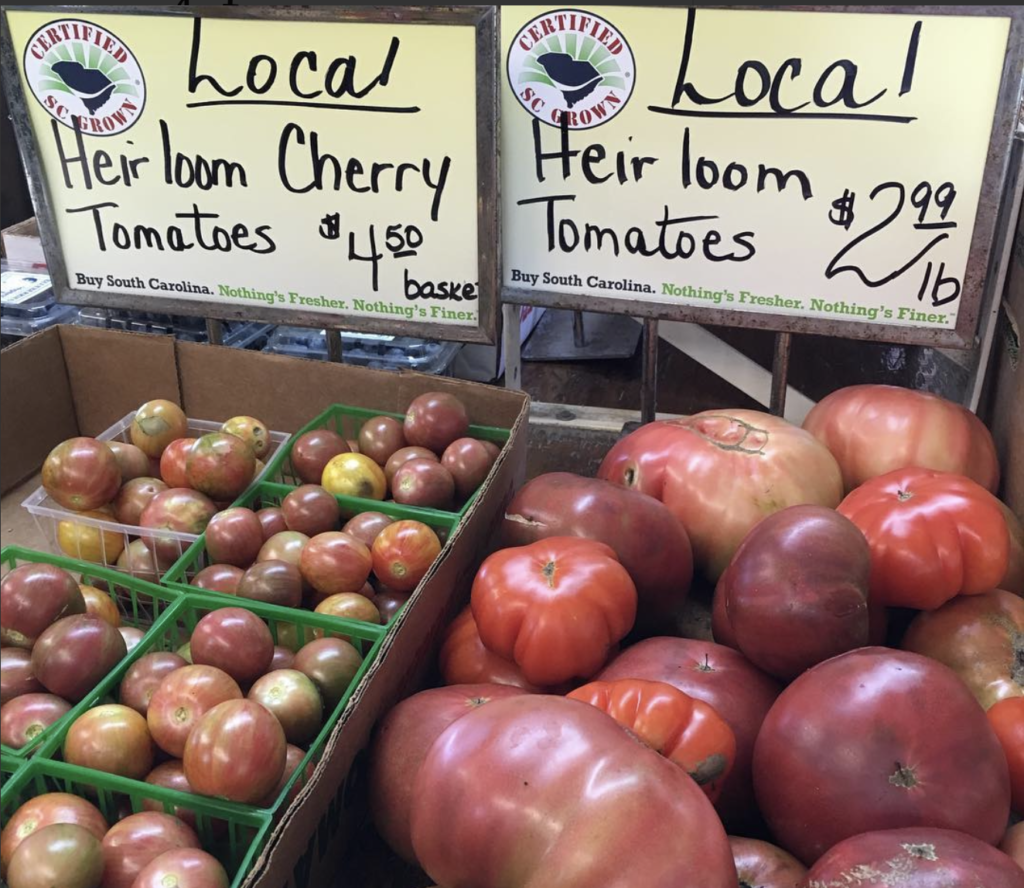
Slow down and stop in the town center of Edisto, really more of a grouping of beautiful antebellum houses, the post office, and historic churches. The Bailey House is an 1880s general store-turned-arts space, showcasing local pieces and crafts. Edisto Island Museum is a great place to learn about the island’s history and agricultural context, with exhibits on prominent island families and sites, scale models, and curated artifacts and antiques. The Edisto Island Historic Preservation Society operates special tours on the island throughout the year, works to repair Edisto’s historic cemeteries, and were instrumental in preserving the two remaining slave cabins on the island. They donated one to the Smithsonian Museum of African American History, and the other is proudly displaced in Edisto Island Museum. They also have a great gift shop stocked with locally made jewelry, pottery, preserves and bagged rice, and books on local history and nature.
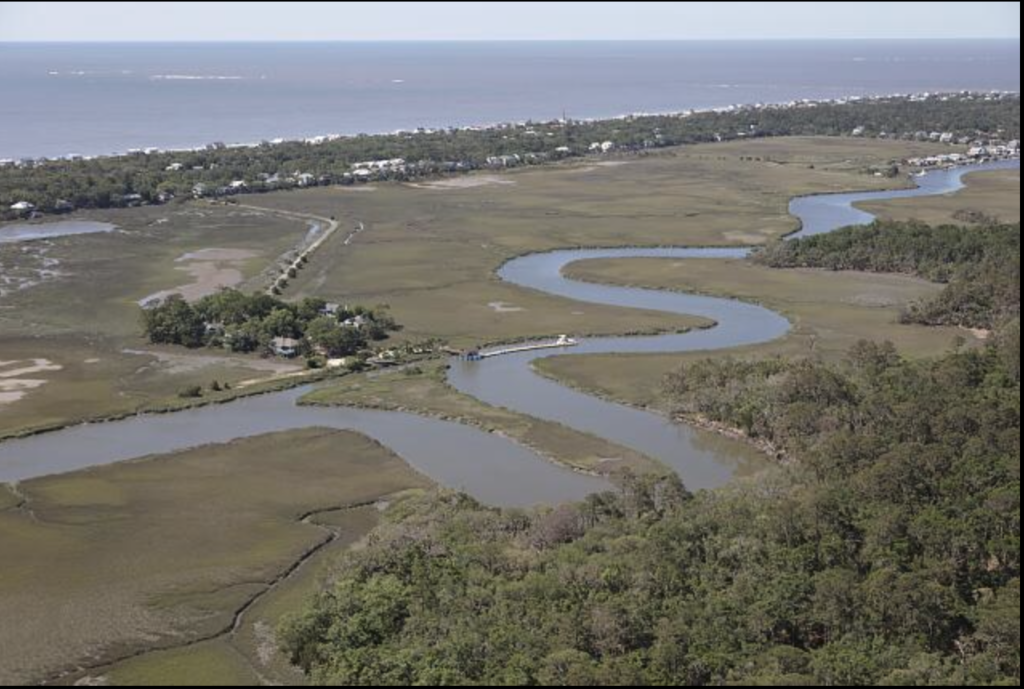
The 1832 granted Greek Revival Presbyterian Church with its large historic graveyard, circa 1840 Trinity Episcopal Church with its beautiful Victorian oak paneled interior, and 1818 Edisto Island Baptist Church, founded by the Townsends of Bleak Hall plantation (now Botany Bay), are nearly side by side on Highway 174 and all worth a visit.
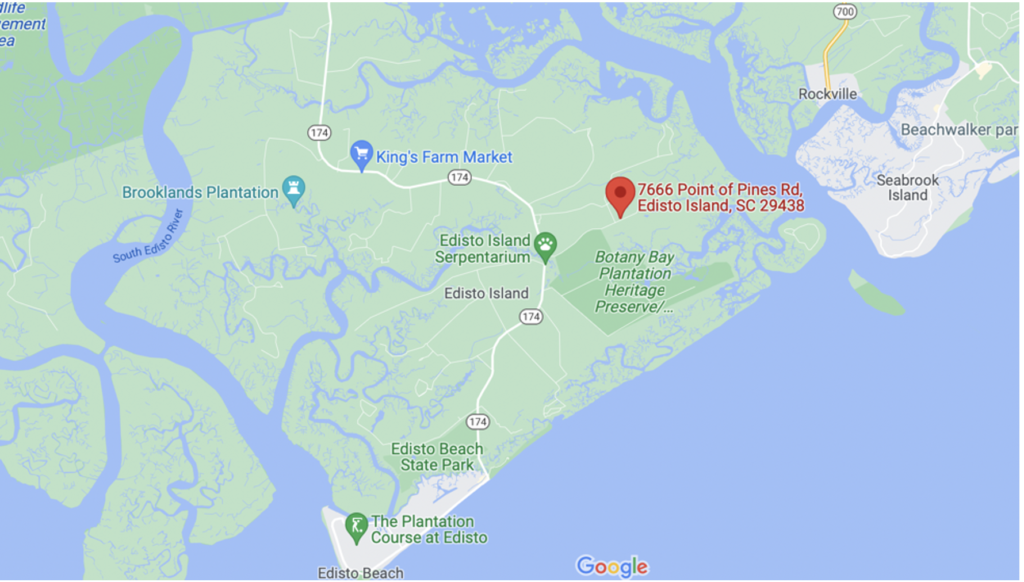
One of the most special historic sites on the island is the Hutchinson House on Point of Pines Plantation Road, a fascinating place to learn about the important African American contributions to the history of Edisto Island. Under restoration by Edisto Island Open Land Trust, the house sits on ten acres that feature picnic benches, a kiosk with information about the trust’s land conservation work, a series of interpretive panels about the house, and a nature trail with bird boxes and natural flora and fauna. Hutchinson House is the most intact house on the island built by African Americans during the Reconstruction era. Henry Hutchinson built the vernacular Carpenter Gothic house in 1885 for his young wife Rosa. They operated a cotton gin and were highly successful Black islanders, and the house remained in the family until 2016. Today EIOLT is working to preserve and restore the house as a teaching tool for future generations about early island life.

When you’re ready for lunch, drive towards Edisto Beach and you’ll find several restaurant options and no shortage of fresh seafood. Edingsville Grocery Restaurant & Bar on Highway 174 offers indoor and outdoor seating at their cozy establishment, where “Low Country inspired cuisine is our specialty, created with ingenuity and passion, inspired by the fantastic flavors of both of Carolinas. We take great pride in improving upon your favorite Southern dishes in classically and new, creative ways.” Southern classics is the name of their game: they have BBQ plates, ribs, and sandwiches with Lowcountry style vinegar sauce, classic appetizers like pimento cheese and shrimp dip, cornmeal pan-fried chicken livers, shrimp and grits, seafood platters, and fresh creek shrimp. Most entrees come with two sides of your choice: stewed okra and tomatoes, red rice, adluh grits, or mac and cheese.
The Sea Cow Eatery, a local favorite founded by Lori Fowlkes back in 1996, offers fried flounder sandwiches; oyster po boys; salads; fried shrimp, oyster, flounder, scallop, or combo platters; and their signature SeaCow sandwich- grilled shrimp and spinach with ranch on a toasted bagel, slow or beer battered fries on the side. The current owners since 2001, Tammy and Tom Kontinos, kept the original recipes and added a host of fabulous desserts to the menu. They have a pet friendly deck and are open for brunch on the weekends too.
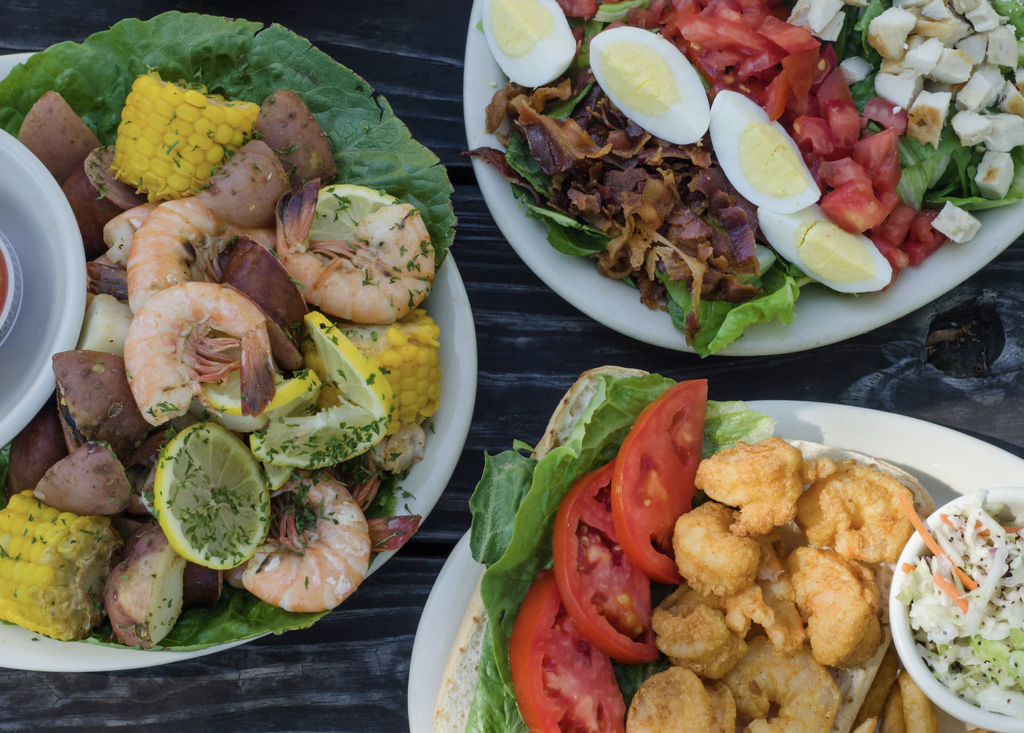
After lunch, there are two spectacular natural wonders on Edisto: Botany Bay and Edisto Beach State Park. Botany Bay Plantation Wildlife Management Area boasts 4600 acres of maritime forest, ponds, walking trails, historic buildings, and pristine, undeveloped beachfront known for its otherworldly driftwood at “Boneyard Beach”. Bleak Hall and Sea Cloud were cotton plantations until the 1930s, when Dr. James Greenway bought and combined them to create Botany Bay. The Meyers family who owned it next kindly donated it to the South Carolina Department of Natural Resources in 2008 to create the preserve. Their website notes, “visitors can expect to come across deer, snakes (some of which are even venomous), alligators, lizards, egrets, seagulls, sea turtles, fiddler crabs, clams, mussels, oysters, blue crabs, ghost crabs, dozens of sea birds, and racoons.”
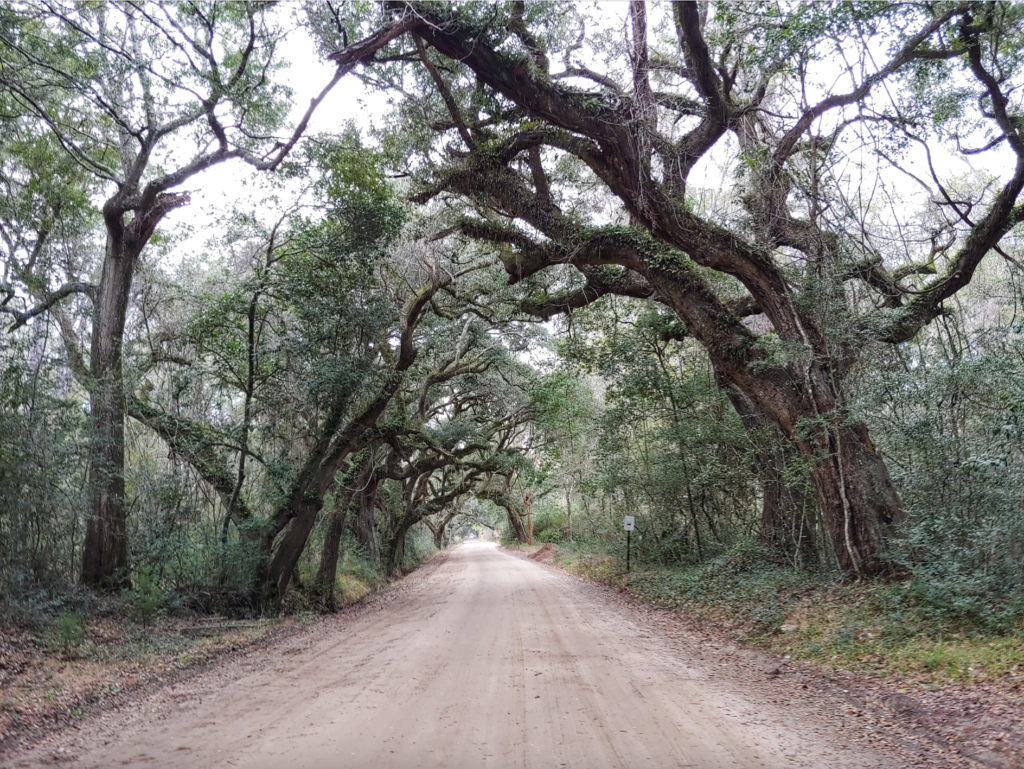
Edisto Beach State Park on State Cabin Road includes four miles of trails, 1.5 miles of beach, picnic shelters, cabins for rent, campgrounds, and a learning center stretched across 1255 acres. At $8 admission for adults and $4 for children, it’s an absolute bargain for a day of swimming on a pristine, unspoiled beach, seashell hunting, wildlife watching, and marsh front hiking.
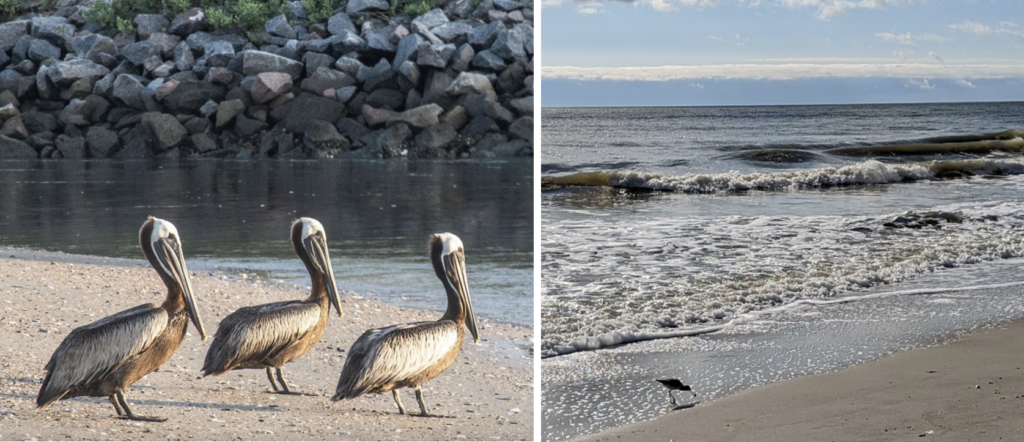
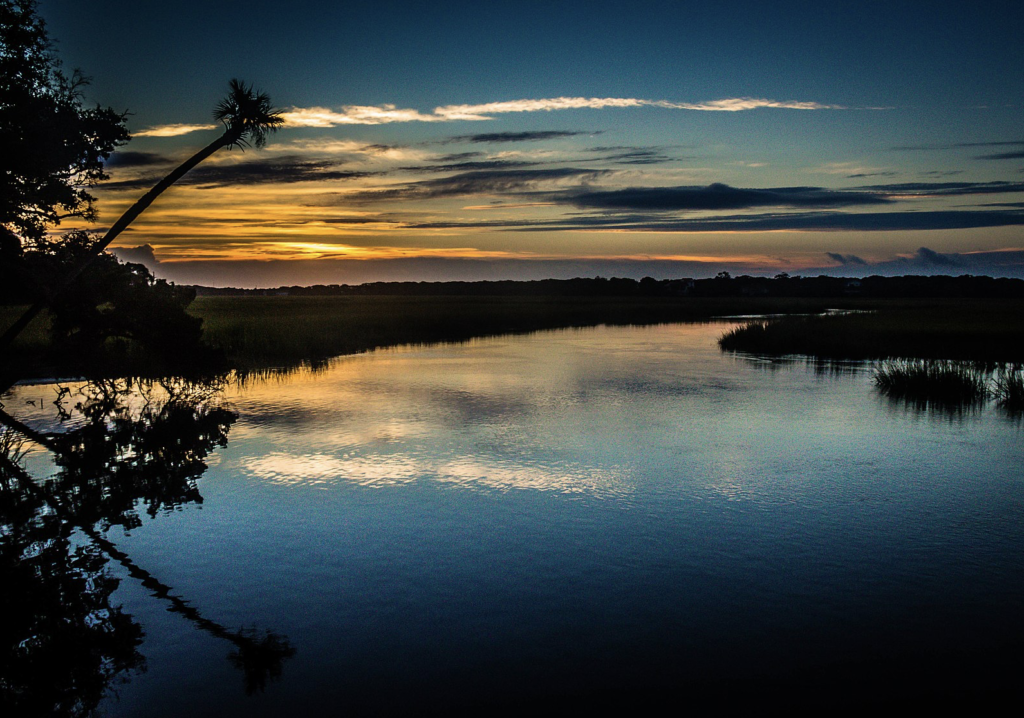
After a day of sightseeing, if you’re wanting a low-key, fun dinner on Edisto Beach’s main drag, try McConkey’s Jungle Shack, which has burgers, hot dogs sandwiches, seafood plates, and an offering of Mexican inspired cuisine like the beer battered fried flounder tacos or the blackened mahi or shrimp tacos. Sides and desserts include hushpuppy baskets and coconut pie. Coot’s Bar & Grill, another no-frills and fun option, has wraps, quintessential seafood platters, and a host of pizzas from Pelican Pizza (in the same venue) including standards, Hawaiians, and the ‘sea of love’- a specialty pizza topped with shrimp, cheese, onion, green pepper, and tomatoes.
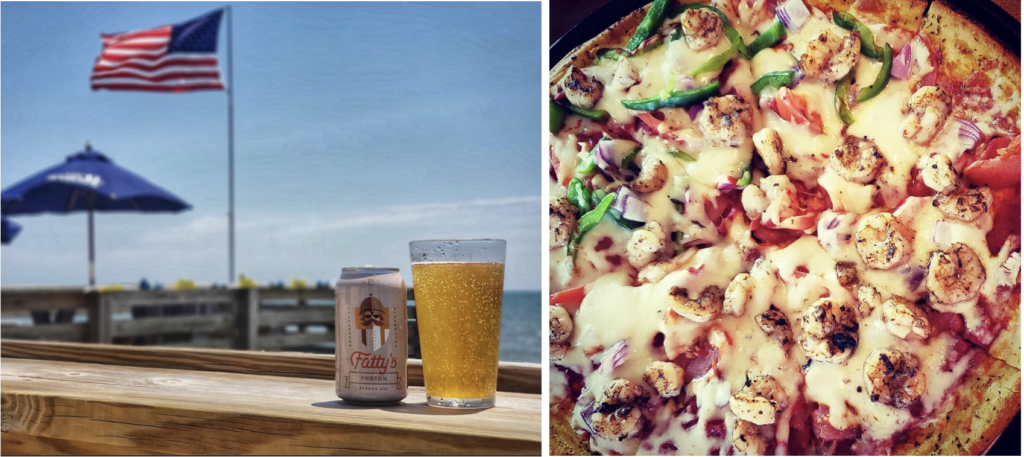
Whaley’s Store calls themselves “the best seafood dive in South Carolina”, with pub inspired and seafood dishes like crab stuffed shrimp, wings, and the ‘round man platter’ (oysters, shrimp, flounder, and a crab cake for good measure). Whaley’s has a full bar and a robust beer and wine menu plus libations like the EB Iced Tea (a take on the Long Island) and the ‘happy wifey’ (black cherry rum, soda, and cranberry). Southern Living counted Whaley’s as one of South Carolina’s top 10 seafood restaurants; “Housed in a former gas station that was once the only place to get fresh water or make a phone call for 45 miles, Whaley’s still serves as a popular gathering spot. But now locals and visitors come by for platters of fried mahi-mahi bites dipped in house-made Ranch-chipotle sauce, mussels spiked with garlic and white wine, and beers pulled from the original soda cooler.”
The Waterfront Restaurant is run by the Flowers family, who have proudly worked in the Edisto seafood industry for four generations. Scot Flowers’ dad was a shrimp boat captain for 44 years! Their motto is “fine dining- fond friendships” and their website notes, “The Waterfront provides a casual and family-friendly atmosphere while offering delicious, fresh seafood. Local shrimp and oysters harvested by Scot’s family grace the menu each night. The menu also features salads, pasta, sandwiches, steaks and plenty of other Lowcountry seafood. The menu and specials are always changing due to seasonal availability in their efforts to provide the freshest seafood and produce. Seasonal vegetables are provided by local King’s Farm, owned by Susan’s parents.” The Scallops or Shrimp St. Pierre, simmered in a shallot and bacon cream sauce over a bed of fettuccini, is amazing, as is the pecan crusted fried flounder and its apricot shallot sauce. They offer a ‘lil matey’s menu’ for the young ones with smaller appetites.

Sources:
- https://www.theseacoweatery.com
- https://edingsville.com
- https://www.southernliving.com/travel/south-east/south-carolina-seafood-spots
- https://www.waterfrontrestaurantedisto.com/home
- https://www.edistobeach.com/edisto-favorite-roadside-markets/
- https://www.kingsfarmmarket.com/home
- “Sketch E. No. 3 shewing the progress of the Survey of the North and South Edisto Rivers and St. Helena Sound, South Carolina.” Coastal Survey, 1852
- Nicholas Butker. “Steamboating from Edisto to Charleston ca. 1900.” Charleston Time Machine. 5 April 2019. https://www.ccpl.org/charleston-time-machine/steamboating-edisto-charleston-ca-1900
- Adam Chandler and Tom Shaw. ‘Edisto Island Multiple Resource Area.” National Register of Historic Places Nomination Form. January 9, 1986.
- Greg Estevez. Edisto Island, The African American Journey. Jacksonville, Florida: self-published, 2019.
- https://discoversouthcarolina.com/articles/road-trip-the-edisto-island-national-scenic-byway
- https://edisto.org/history/
- Charles Spencer. Edisto Island, 1861 to 2006: Ruin, Recovery, and Rebirth. Charleston: History Press, 2008.
- Charleston Courier. “Trip to Edisto.” 10 January 1846.
- https://www.scpictureproject.org/charleston-county/baileys-store.html
- https://edistomuseum.org/index.php/about-us/
- https://www.edistobeach.com/botany-bay/
- https://southcarolinaparks.com/edisto-beach

